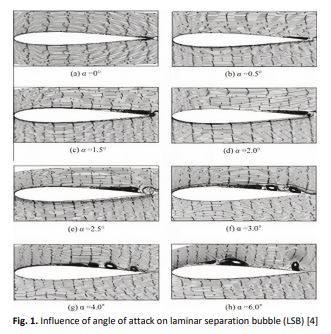A Review on Generation and Mitigation of Airfoil Self-Induced Noise
DOI:
https://doi.org/10.37934/arfmts.90.1.163178Keywords:
Airfoil self-noise, aeroacoustics, porousAbstract
A review on passive acoustic control of airfoil self-noise by means of porous trailing edge is presented. Porous surfaces are defined using various terms such as porosity, permeability, resistivity, porosity constant, dimensionless permeability, flow control severity and tortuosity. The primary purpose of this review paper is to provide key findings regarding the sources and mitigation techniques of self-induced noise generated by airfoils. In addition, various parametric design concepts were presented, which are critically important for porous-airfoil design specifications. Most research focus on experimentation with some recent efforts on numerical simulations. Detail study on flow topology is required to fully understand the unsteady flow nature. In general, noise on the airfoil surface is linked to the vortex shedding, instabilities on the surface, as well as feedback mechanism. In addition, acoustic scattering can be minimized by reducing extent of the porous region from the trailing edge while increasing resistivity. Moreover, blowing might also be another means of reducing noise near the trailing edge. Ultimately, understanding the flow physics well provides a way to unveil the unknowns in self-induced airfoil noise generation, mitigation, and control.
Downloads

































